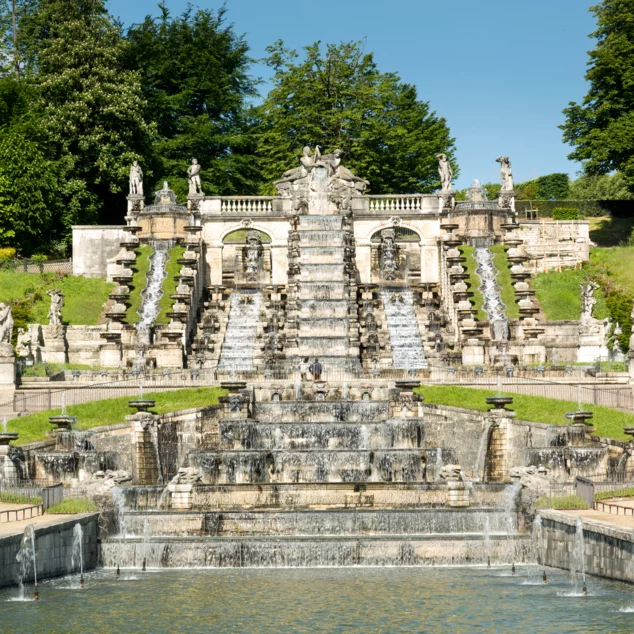Art & Architecture
article | Reading time7 min
Art & Architecture
article | Reading time7 min
Water is one of the riches of the Domaine National de Saint-Cloud. Fountains, pools and waterfalls use water in ingenious and theatrical ways. Take a behind-the-scenes look at a water supply system that has been perfected and expanded over the centuries!
At Saint-Cloud, water features, like garden design, are the result of a skilful exploitation of the topography. In the 17th century, they drew on the knowledge of Florentine fountain builders and the landscape design genius of André le Nôtre.
The site benefits from natural predispositions: the presence of water and a steeply sloping terrain. The development work carried out met several imperatives: storing and transporting water, improving the resource and obtaining sufficient pressure for the water features.
Eric Sander
The water resource was based on the presence of a watercourse, the ru de Vaulichard, coming from Vaucresson, which originally crossed the park. After a certain point, it was diverted from its original bed and channelled.
Water was also supplied by several springs near the château. The Source de la Reine or Source d'Aulnay was used to supply the residence with drinking water. It still exists, under the château terrace, and feeds the Fer à Cheval basin.
In 1679, Louis XIV presented Philippe d'Orléans with the property of financier Pierre Monnerot, now the Sèvres town hall. To feed the waterfall in his garden, the latter used water from a spring in Ville-d'Avray, now known as Fontaine du Roy. From then on, Monsieur had access to the water from Ville-d'Avray. To bring the water into the park, an aqueduct had to be built. Begun in 1685, it was operational by the end of the 17th century.
The Ru de Vaulichard hydraulic network (northern branch) was disconnected in the 1960s. The Ville-d'Avray network (southern branch) is now the only source of raw water for the estate.
Séverine Drigeard
Operating the water features for one hour requires a volume of water of 1,500m3. How do you get so much water in such a short space of time?
We need to store rainwater, collected throughout the year in underground aqueducts and gullies in the Fausses-Reposes forest. This is the role of the Ville-d'Avray ponds. Together, these constitute a reserve of over 100,000m3.
The Ville-d'Avray aqueduct collects water from the ponds and conveys it to the Grand Réservoir, located high up on the estate. Its volume is 5 to 6 times smaller than that of the ponds. From this reservoir, pipes send the water either to the water features or to the sprinkler system.
Séverine Drigeard
The animation of the ponds is the result of gravitational forces alone. It was the steep slope of the land up to the Seine front - 76 metres between the highest and lowest points, approximately one kilometer apart - that enabled the system to be installed with gravity flow. All the basins are interdependent for their supply and operation.
Over the steep slopes of the gardens, the water acquires a natural pressure. By manually opening the gates, the water makes its way from the Grande Gerbe to the 24 Jets basins, passing through the Fountain of the Dogs and the Allee des Goulottes, spouting out at a height of almost 30 metres at the Grand Jet and ending its course in the bubbling water of the Grande Cascade, before being lost in the outlets along the banks of the Seine.
Eric Sander







